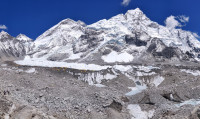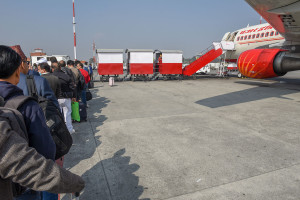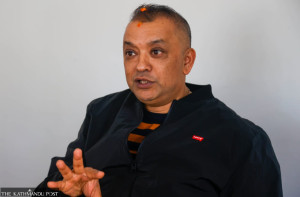Opinion
Look east
A more integrated East South Asia can pave the way for the region’s economic transformation
Sujeev Shakya
In Delhi, the media has an eye on the Northeast and any event there has the potential to interest and constitute the breaking news. It seems as though people are just learning to understand a region that had previously seemed so alien.
India’s federal structure and the concentration of power in Delhi since independence has left the country being identified perhaps more with northern South Asia. Back when illiteracy loomed and knowledge of far-off places was not easily accessible through the internet as it is today, it was obvious for the size of eyes and skin colour to be the differentiators. But today, when knowledge about different people and places is easily attainable, it is sad to see the way a whole region of over 45 million people is viewed.
Assamese, Bodo, Manipuri and Nepali are among the 22 languages recognised in the Indian Sixth Schedule. However, it seems the discourse concerning the Northeast needs a thorough re-evaluation and that only economic transformation can bring such regions to the mainstream. Goa, another state in India, with less than two million people, attracts attention from over the world as tourism has brought it economic transformation. It is time to rethink the economic potential of the Himalayan region, starting from Uttarakhand to the Northeast states, through North Bengal and Sikkim, Nepal, Bhutan right up to Myanmar—a new economic bloc where activities blur political boundaries.
Similarities and differences
The Himalayan region has an economy that is more subsistence oriented and spending patterns are completely different here than in the flatlands. You can easily spot a hill driver amongst the many cab drivers and a store associate from many others. There is a culture of the importance of the self, be it in how one looks or how one wants to be seen. So brand managers seem to have gotten their strategies utterly wrong, when they equated the Kathmandu market with bazaars in Lucknow or Patna in terms of products and therefore, want sales managers from those regions to service the Nepal market. But these markets are not comparable. For instance, consumers in Nepal and many young people in the Northeast emulate Korean fashion rather than Bollywood. The products they demand are thus entirely different.
Furthermore, the buying behaviour of consumers is very different. People will pay more for better packaging without even comparing the content, which explains why confectionery and biscuit aisles in supermarkets are cluttered with nicely packaged products from Malaysia or Thailand. The way instant noodles has almost become a way of life in the entire region also shows how consumption patterns are different. Nepal, with its opening up to international tourists in the 1960s, brought in the café culture and international cuisine, making Kathmandu the cosmopolitan heart of South Asia.
The potential for Nepali businesses to expand their market to other parts of East South Asia is tremendous. Similarly, there are opportunities for areas that have developed different competencies in particular sectors.
Hydro, agriculture, tourism and service
The major potentials of this area are similar and have been talked about for ages. The region’s great bio-diversity makes it unique and with advances in transportation and communication shrinking divides, its potentials make more commercial sense than ever.
The distance from Kathmandu to Guwahati is just over 1,000 kilometres, the same distance as from Kathmandu to Delhi. Furthermore, Guwahati is closer to Yangon than Delhi. As road and rail infrastructure improve, it will become easier to move people and products across the region. Tourism continues to be the biggest potential as there are so many unexplored areas and with a semblance of political stability, more people will start to travel to this region.
The service industry is the hallmark of the region, with people under 25 forming half of the population. These people like to leave their homes in search of jobs across the world. One hotel management school in Kalimpong, India has the bulk of its students coming from Bhutan. Students across the Northeast will be more than happy to come and learn luxury selling if institutes imparting courses on the same open up in Nepal. After all, brands seem to be in the DNA of the people in the region as there is more acceptability of brands. For instance, it does not take much time to adapt to selling Louis Vuitton bags. There is also great potential for liberal arts schools and design centres to be established as creativity reigns in the minds of the people going in for left-brain professions such as medicine, engineering or accounting. The common themes to the region are endless.
Myanmar and China
The importance of the region has only increased with Myanmar, the world’s 24th most populous country with a market of over 60 million people, opening up to the outside world. China is already making inroads into Myanmar through which it will, connect with India and Bangladesh. Myanmar will help to connect China’s economic laggard Kunming aka India’s Northeast with the far-off areas of economic boom. Many suggest Myanmar will ape the Chinese way of growth. But it is also felt that the influence of India during the early parts of the 20th century and a culture moulded around the erstwhile India would cause the Burmese to look for intellectual freedom, cultural renaissance and a stable democracy in the long run; something different from the way China is moving.
Inter-linked region
People in Nepal and Northeast India are better poised to understand the Myanmar market and bring in networks to make many businesses, especially in the service sector, work. The diaspora from these regions currently in Myanmar will be more than happy to link up with businesspeople from the regions they belonged to.
With the Indian federal elections around the corner, all parties have realised that they have ignored Northeast India for far too long. They will want to rearticulate the discourse. As the roots of democracy get stronger in Nepal, as indicated by the recent peaceful elections (when compared with the chaos in Bangladesh and Thailand), economic growth will be the focus. The internet and communication technologies are already making political boundaries less relevant. History provides us with lessons on how suddenly an economic region can emerge; they are never planned, it just happens. Perhaps the positive transformation of East Southasia is on the anvil.
sujeevshakya.com




 9.12°C Kathmandu
9.12°C Kathmandu










